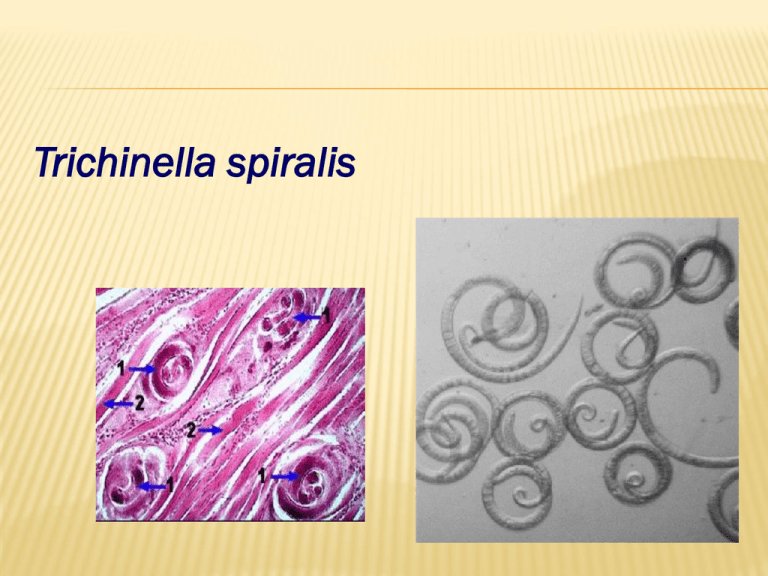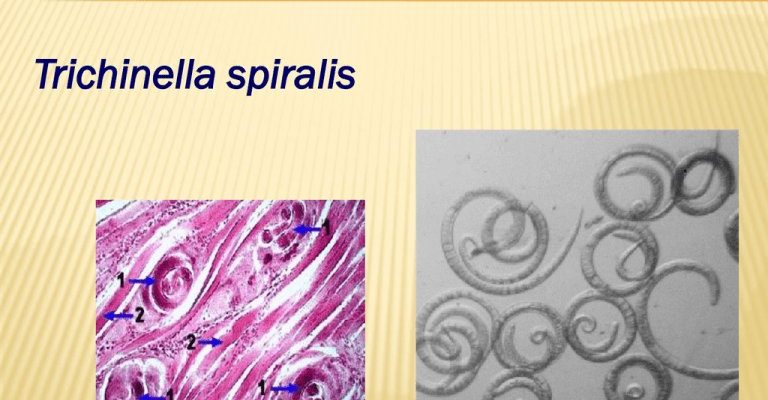
Trichinella spiralis often finds its home in the muscles of mammals, especially pigs. But it’s not alone! There are several other worm species that share similar habitats, competing for space and resources. Knowing how these species compare can give us valuable insights into their behavior, life cycle, and how they affect their hosts. So let’s dive into this wormy world and explore not just Trichinella spiralis, but also some of its counterparts.
What Is Trichinella Spiralis?
To understand Trichinella spiralis, let’s break it down. This roundworm is part of a larger group called nematodes, which are characterized by their long, cylindrical bodies. Trichinella is unique because it has a direct life cycle that primarily involves mammals. Once ingested, usually through undercooked pork, the larvae travel to the intestines, where they mature and reproduce.
The real trouble starts when the larvae migrate to the host’s muscles. This can lead to symptoms like abdominal pain, nausea, and muscle soreness. It’s not exactly a pleasant scenario! Here’s the thing: while Trichinella spiralis poses risks to humans, many people don’t realize this worm is just one of many in the same environment, each playing its role in the ecosystem.
Life Cycle of Trichinella Spiralis
The life cycle of Trichinella spiralis is a riveting tale. It begins when a host, say a pig, eats food contaminated with the larvae. Once inside, the larvae mature into adult worms in the intestines. After mating, the female Trichinella releases larvae, which then burrow into the host’s muscle tissue.
Here’s where things get interesting: the larvae can encyst in muscle tissue, making them dormant yet potentially dangerous if another mammal eats the infected meat. This cycle can continue with the next host, potentially leading to outbreaks of trichinosis. It’s like a relay race where the baton is a parasite that just doesn’t want to quit!
But how does this compare to other similar worm species? Let’s unpack that.
Comparing Trichinella Spiralis with Other Nematodes
When we look at Trichinella spiralis, it’s essential to compare it with other nematodes like Ascaris lumbricoides and Enterobius vermicularis. While all these worms belong to the same family, they each have distinct life cycles and effects on their hosts.
For instance, Ascaris lumbricoides, also known as the giant roundworm, doesn’t just hang out in the intestines. It migrates through the lungs before returning to the gut, which can lead to respiratory issues. In contrast, Enterobius vermicularis, or the pinworm, is notorious for its annoying nighttime antics, causing itching around the anus.
So, even though they share habitats, their behaviors and impacts vary greatly. This shows how diverse the world of nematodes really is!
Trichinella Spiralis and Its Impact on Host Animals
Trichinella spiralis doesn’t just affect humans; it can also impact its natural hosts, primarily pigs. Infected pigs can suffer from muscle inflammation and pain, which can affect their growth and overall well-being. Here’s the thing: the presence of Trichinella spiralis in livestock can also impact the meat industry.
Farmers have to be careful about the health of their pigs, and regulations often require them to monitor for Trichinella infections closely. Understanding its lifecycle helps farmers take preventative measures, like ensuring pigs are fed well-cooked food and maintaining good hygiene practices on farms. This isn’t just about animal health; it’s also about food safety for consumers.
Other Worm Species in Similar Habitats
Alongside Trichinella spiralis, several other worms thrive in similar environments. For example, Strongyloides stercoralis is another roundworm that can be found in the intestines of its hosts. Its unique ability to reproduce within the host without needing a mate makes it a formidable competitor.
Then there’s Ancylostoma duodenale, commonly known as the hookworm. This little guy latches onto the intestinal wall and feeds on blood, which can lead to anemia. Both of these worms underscore how competition for resources can be fierce in the parasite world.
Each of these species has adapted to its environment in fascinating ways. They each have their own survival strategies, showcasing the intricate web of life that exists in parasites.
Prevention and Control Measures
Preventing Trichinella spiralis and similar worm infections often revolves around good hygiene and proper food handling practices. Here are some critical measures:
- Cook meat thoroughly: Ensuring that pork and wild game are cooked to an internal temperature of 145°F (63°C) can kill off these parasites.
- Freeze meat: Freezing pork at -5°F (-20°C) for at least 3 weeks can also kill Trichinella larvae.
- Practice good hygiene: Washing hands and cooking surfaces can prevent cross-contamination.
By following these steps, you not only protect yourself but also help prevent the spread of trichinosis in communities. It’s about taking control of your health and being informed about the potential risks in your food supply.
As we’ve explored the world of Trichinella spiralis and its counterparts, it’s clear that these worms are more than just nuisances—they play vital roles in their ecosystems. Understanding their life cycles, impacts, and prevention strategies helps us appreciate the delicate balance of nature.
Next time you hear someone talk about parasites, you’ll know there’s a lot more to the story than just the scary parts. It’s like a hidden world full of competition, survival, and adaptability. By keeping ourselves informed and practicing good food safety, we can enjoy the benefits of our food without the worry. After all, knowledge is power, especially when it comes to keeping our plates (and bodies) safe!

